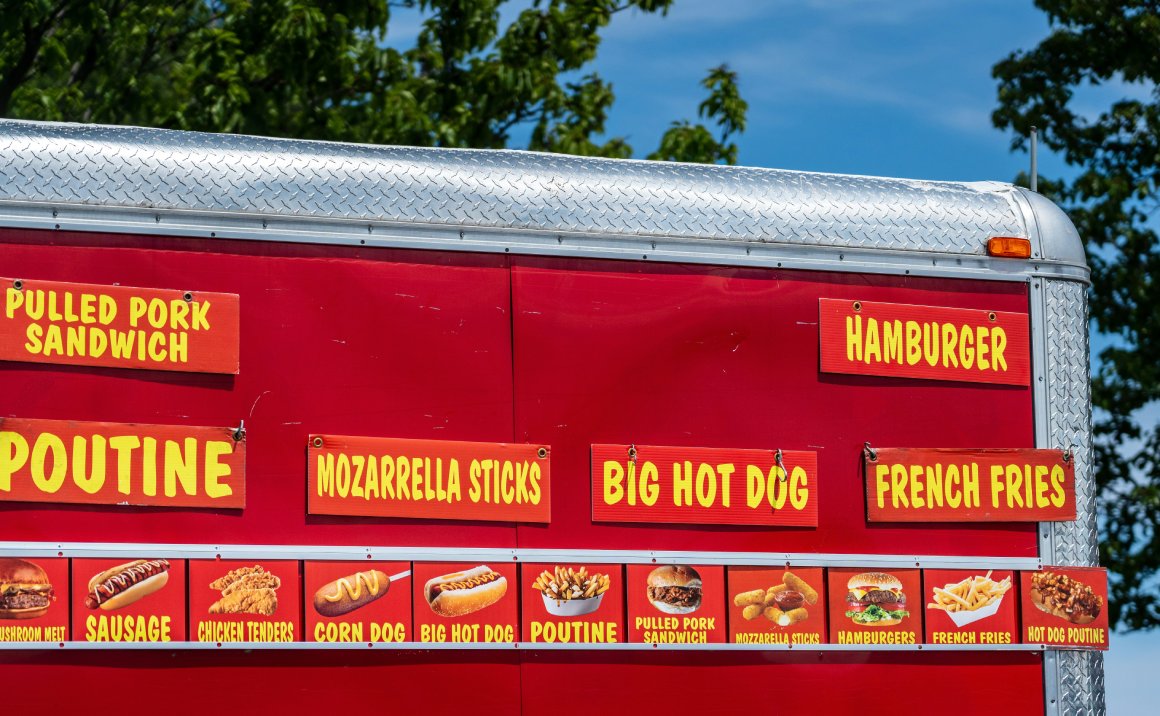
Turning Complaints Into Opportunities: How to Handle Customer Feedback With Grace and Professionalism
This post is part of a regular series. Click here to start at the beginning.
No matter how great your food truck is, complaints are an inevitable part of running a business. Customers may complain about the quality of the food, wait times, or even service. The key to successfully navigating complaints is to not take them personally and to use them as opportunities to improve your business. In this post, we’ll guide you through different styles of complaints—whether in person, online, or over the phone—and how to address them in a calm, professional, and transparent manner.
1. Why Customers Complain: Understanding the Root Causes
Before diving into how to handle complaints, it’s important to understand why customers complain in the first place. While some complaints are legitimate, others may stem from a misunderstanding or unrealistic expectations. By recognizing the reasons behind complaints, you’ll be better equipped to handle them without taking them personally.
Common Reasons Customers Complain:
- Unmet Expectations: Customers may have expectations about the food, service, or overall experience that weren’t met. This could be something as simple as expecting a dish to taste a certain way or assuming the wait time would be shorter.
- Miscommunication: Sometimes, complaints arise due to miscommunication about the menu, prices, or portion sizes. For example, if a customer orders a “spicy” dish but wasn’t aware of just how spicy it would be, they may complain, even though the dish was prepared correctly.
- Emotional Triggers: People might be having a bad day or dealing with unrelated stress, and a minor issue with their meal could be the tipping point that leads to a complaint. This doesn’t excuse the behavior, but understanding that it might not be entirely about your food truck can help you respond with more empathy.
Example: A customer may complain that their sandwich didn’t taste as expected because they assumed it would come with a different type of bread. While this is a misunderstanding, it still provides valuable feedback that you can address by making menu descriptions clearer to avoid future confusion.
2. Handling In-Person Complaints: Staying Calm and Professional
When a customer approaches you with a complaint in person, it can feel personal, especially when you’re working hard to provide the best service possible. However, it’s important to stay calm and professional, listen carefully to what they have to say, and avoid reacting emotionally.
Steps to Handling In-Person Complaints:
- Listen First: Give the customer your full attention and let them express their concern without interrupting. Sometimes, customers just want to feel heard.
- Example: A customer at your taco truck says that their taco is too cold. Instead of immediately defending your product, take the time to listen and understand their frustration. Let them finish speaking before responding.
- Acknowledge the Issue: Acknowledge the customer’s complaint, even if you don’t necessarily agree with it. By validating their feelings, you show that you take their feedback seriously.
- Example: After listening to the customer’s complaint about the cold taco, you can say, “I’m sorry that the taco wasn’t as warm as you expected. I understand how disappointing that can be.”
- Offer a Solution: Once you’ve acknowledged the issue, offer a reasonable solution. Depending on the situation, this could be remaking the dish, offering a refund, or providing a free item for their next visit.
- Example: You can offer to remake the taco and ensure it’s heated properly, or provide a voucher for a future visit. “Let me make you a fresh taco right now, and I’ll also give you a voucher for your next visit on the house.”
- Thank Them for Their Feedback: End the interaction by thanking the customer for bringing the issue to your attention. This shows that you appreciate their feedback and are committed to improving their experience.
- Example: “Thank you for letting us know! We appreciate your feedback, and we’ll make sure to pay closer attention to the temperature of our dishes moving forward.”
Why This Approach Works: In-person complaints can feel confrontational, but by remaining calm and addressing the issue transparently, you can often turn a negative experience into a positive one. Customers who feel heard and respected are more likely to give you another chance.
3. Handling Online Complaints: Responding Publicly and Professionally
Online complaints can be tricky because they’re public and can affect your reputation. Whether a customer leaves a negative review on Yelp, Facebook, or Google, how you respond can make a big difference in how future customers perceive your business. Transparency and professionalism are key when addressing online complaints.
Steps to Handling Online Complaints:
- Respond Quickly: Time is of the essence when handling online complaints. The faster you respond, the more it shows that you care about your customers. Aim to respond within 24-48 hours to avoid letting negative reviews sit unanswered.
- Example: A customer leaves a review on Yelp saying that they waited too long for their order at your BBQ truck. Responding the same day shows that you’re actively monitoring feedback and value your customers.
- Address the Complaint Publicly: Respond publicly to the review, addressing the specific concerns the customer raised. This shows transparency and lets other customers know that you take complaints seriously.
- Example: “Thank you for your feedback, and we’re sorry to hear that you had to wait longer than expected for your order. We’re constantly working to improve our service speed, and we’ll take your feedback into account.”
- Offer to Resolve the Issue Privately: After acknowledging the issue publicly, invite the customer to discuss the matter further in private (via direct message or email). This allows you to resolve the issue without airing too many details publicly.
- Example: “We’d love to make things right. Please reach out to us directly at info@bbqtruck.com so we can offer you a free meal on your next visit.”
- Stay Professional and Avoid Arguing: Negative reviews can feel personal, but it’s important to remain calm and professional in your response. Avoid arguing or getting defensive, as this can make the situation worse.
- Example: Even if a customer’s review is harsh or exaggerated, resist the urge to argue. Instead of saying, “That’s not true, and we didn’t make you wait that long,” say, “We’re sorry your experience didn’t meet your expectations. We’ll work to improve and ensure that future visits are more enjoyable.”
- Show Gratitude for Constructive Feedback: If the complaint includes constructive criticism, thank the customer for their input and mention how you’ll use their feedback to improve.
- Example: “We appreciate your feedback on the wait times, and we’ll work on streamlining our process to serve customers faster during busy periods. Thank you for helping us improve!”
Why This Approach Works: Responding to online complaints in a public, professional, and transparent manner demonstrates to both the complaining customer and others reading the review that you’re committed to excellent service. It also helps protect your reputation by showing that you care about resolving issues.
4. Handling Complaints Over the Phone: Being Empathetic and Solution-Oriented
Phone complaints can sometimes catch you off guard, but it’s important to stay calm and patient, especially since you can’t rely on facial expressions or body language to show empathy. Handling phone complaints effectively requires careful listening and a focus on providing a solution.
Steps to Handling Phone Complaints:
- Listen Without Interrupting: Let the customer fully explain their issue before jumping in. Sometimes, they simply need to vent their frustration, and interrupting them can make things worse.
- Example: A customer calls to say they received the wrong order from your sandwich truck. Let them explain what happened before offering a solution. “I’m so sorry for the mix-up—could you tell me more about what went wrong with the order?”
- Use Empathetic Language: Without the benefit of face-to-face communication, it’s important to express empathy through your words. Phrases like “I understand how frustrating that must be” can help defuse the situation.
- Example: “I understand how frustrating it must be to receive the wrong order, especially if you were looking forward to a specific meal. I’m really sorry about that.”
- Offer a Clear Solution: Once you’ve listened to the customer’s concern, offer a clear and straightforward solution. This might be remaking their order, offering a refund, or providing a discount on their next meal.
- Example: “We’d be happy to remake your order right away, or if you prefer, we can offer you a refund or a discount on your next visit. Let me know what works best for you.”
- End on a Positive Note: Thank the customer for bringing the issue to your attention and let them know that you’ll work to prevent similar issues in the future.
- Example: “Thank you again for reaching out. We’ll make sure this doesn’t happen again, and we appreciate your understanding. We look forward to serving you again soon!”
Why This Approach Works: Handling phone complaints with patience and empathy helps build trust with customers, even when things go wrong. It shows that you’re willing to go the extra mile to make things right, which can turn a negative experience into a positive one.
5. Handling Emotional or Angry Customers (Continued)
Dealing with angry or emotional customers can be one of the most challenging aspects of running a food truck. When emotions run high, it’s easy for the situation to escalate if not handled properly. The key to managing these interactions is staying calm, listening carefully, and defusing the situation with empathy and professionalism.
Steps to Handling Angry or Emotional Customers:
- Stay Calm and Don’t Take It Personally: It’s natural to feel defensive when someone is upset with your service, but it’s important to remain calm and remember that the customer’s frustration is often about the situation, not you personally.
- Example: A customer is upset because their food took longer than expected. Instead of reacting defensively with “We were busy,” try to acknowledge their frustration calmly: “I understand that the wait was longer than expected, and I’m really sorry for the inconvenience.”
- Let Them Vent: Sometimes, angry customers just need to express their emotions. Allow them to speak without interrupting, even if what they’re saying seems exaggerated. This can help them feel heard and defuse the situation before you offer a solution.
- Example: A customer at your BBQ truck is upset because their order was incorrect and they had to wait longer to get the right dish. After listening to their complaint, respond with, “I can see how that would be frustrating. I really appreciate your patience, and I’d love to make it right.”
- Apologize and Acknowledge Their Feelings: Even if the complaint feels unjustified, an apology shows that you care about the customer’s experience. Use phrases like “I’m sorry” or “I understand how you feel” to validate their emotions.
- Example: A customer at your dessert truck is upset that they received the wrong flavor of ice cream. You could say, “I’m really sorry that happened. I know it can be disappointing when you’re expecting something different.”
- Offer a Solution and Follow Through: Once the customer has calmed down, present a clear solution to resolve the issue. Whether it’s offering to remake the order, providing a refund, or offering a free item, be sure to follow through with the promised resolution.E
- xample: “Let me make you a new ice cream with the flavor you originally ordered. I’d also like to offer you a free dessert for your next visit as a thank-you for your patience.”
- Know When to End the Conversation: If the customer remains angry or unreasonable after you’ve offered a solution, it’s okay to politely end the conversation. Be respectful but firm in setting boundaries, especially if the situation becomes verbally abusive.
- Example: “I understand that you’re upset, and I’ve done my best to resolve the issue. If there’s anything else I can do, please let me know. Otherwise, I hope we can serve you again in the future under better circumstances.”
Why This Approach Works: Angry customers often just want to feel heard and validated. By letting them vent, acknowledging their frustration, and offering a solution, you can often calm the situation and turn a negative experience into a positive one. Even if the customer doesn’t leave satisfied, handling the situation with professionalism helps maintain your reputation.
6. Handling Complaints With Transparency and Openness
One of the best ways to alleviate complaints and prevent future issues is to be transparent and open about any challenges your food truck might be facing. Whether it’s longer wait times during peak hours or a limited menu due to supply shortages, being upfront with your customers can go a long way in managing their expectations and reducing frustration.
How to Be Transparent With Customers:
- Set Expectations Upfront: Let customers know if there’s going to be a longer wait time or if you’re running low on certain menu items. Being upfront about potential delays or issues can help manage expectations and prevent complaints.
- Example: If your food truck is experiencing longer wait times due to a busy event, post a sign or mention to customers that their orders may take longer than usual. “Thanks for your patience! We’re experiencing high demand today, so there may be a 20-minute wait for orders.”
- Address Issues Publicly When Appropriate: If you receive multiple complaints about the same issue (such as long waits or quality inconsistencies), consider addressing it publicly on social media or through signage at your truck. This shows transparency and a willingness to improve.
- Example: If customers are consistently complaining about long wait times, you might post an update on your truck’s social media: “We’ve heard your feedback, and we’re working on improving our order process to reduce wait times during busy hours. Thank you for your understanding and continued support!”
- Explain Changes or Limitations: If you’ve made changes to the menu or pricing due to ingredient shortages or other constraints, explain the reason behind those changes. This transparency helps customers understand that the decision wasn’t arbitrary.
- Example: A food truck that sources local ingredients might have to raise prices slightly due to seasonal shortages. Address this openly with a sign: “Due to local ingredient shortages, prices on some menu items have increased temporarily. We appreciate your understanding as we continue to support local farmers.”
Why This Approach Works: When you’re open and honest with your customers, they’re more likely to be understanding and patient. Transparency helps build trust, and customers appreciate knowing that you’re not hiding anything from them. It also reduces the likelihood of complaints, as customers are less likely to be upset when they know what to expect.
7. Turning Complaints Into Opportunities for Growth
Instead of viewing complaints as a negative aspect of running a food truck, consider them valuable opportunities for growth. Every complaint is a chance to learn something new about your business and make improvements that will ultimately benefit you in the long run. By embracing complaints and taking them as constructive feedback, you can refine your service, menu, and customer experience.
How to Turn Complaints Into Opportunities:
- Look for Patterns in Feedback: If you notice recurring complaints about a specific issue (such as portion sizes, food temperature, or service speed), take it as a sign that something needs to be addressed. Use these patterns to identify areas for improvement.
- Example: A burger truck receives multiple complaints that the fries are soggy by the time customers receive their orders. The owner tests different fry preparation methods and finds that switching to a double-fry process results in crispier fries and fewer complaints.
- Encourage Constructive Feedback: Actively encourage customers to provide feedback, even if it’s not always positive. You can place a suggestion box near your truck or include a feedback form on your website. This gives customers an outlet to voice their concerns directly to you instead of online.
- Example: A taco truck places a small sign on the counter that says, “We value your feedback! Please let us know how we can improve,” along with a QR code that links to an online suggestion form.
- Use Complaints to Innovate: Sometimes, complaints can inspire innovation. If customers consistently ask for a specific menu item or suggest a way to improve your current offerings, use that feedback to test new ideas or adjust your menu.
- Example: A sandwich truck receives feedback from customers who wish there was a gluten-free option. After experimenting with different recipes, the truck adds a gluten-free bread option, which quickly becomes a hit with both new and returning customers.
- Train Your Team to Handle Complaints: Make sure your team is trained to handle complaints with the same level of care and professionalism that you would. Consistent training ensures that every customer receives a positive experience, even when things go wrong.
- Example: The owner of a dessert truck holds monthly staff meetings to review how to handle customer complaints and role-plays different scenarios to ensure the team feels confident in resolving issues on the spot.
Why This Approach Works: By viewing complaints as opportunities for growth, you can continually improve your food truck’s operations, customer service, and offerings. Customers who see that you’re responsive to their feedback are more likely to return, and you’ll build a reputation as a business that values customer satisfaction.
Conclusion: Handling Complaints With Grace and Professionalism
Complaints are an unavoidable part of running a food truck, but how you handle them can make all the difference in your success. By understanding why customers complain, staying calm, and addressing issues transparently and empathetically, you can turn negative experiences into opportunities for growth. Remember, complaints aren’t personal—they’re a chance to improve and show your customers that you care about their experience. Whether in person, online, or over the phone, handling complaints with grace and professionalism will help you maintain a positive reputation and keep your customers coming back for more.
Stay tuned for our next post, where we’ll discuss advanced marketing strategies for building customer loyalty and increasing repeat business!
This post is part of a regular series. Please use these links to view the rest of the series in order.
An Introduction to Starting a Food Truck Business
The Ultimate Beginner’s Guide to Starting a Food Truck Starting a food truck is an…
How to Build Customer Engagement and Retention for Your Food Truck
The Complete Guide to Customer Engagement and Retention for Food Truck Owners Customer engagement and…
Creating a Loyalty Program for Your Food Truck
How to Build a Loyalty Program that Drives Repeat Business for Your Food Truck Loyalty…



